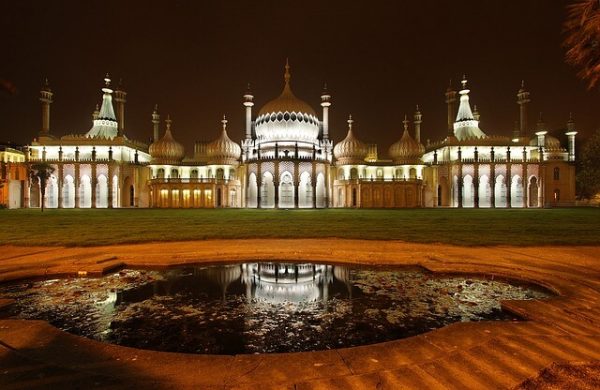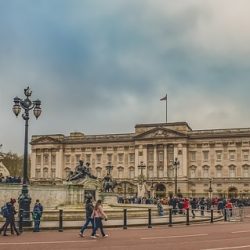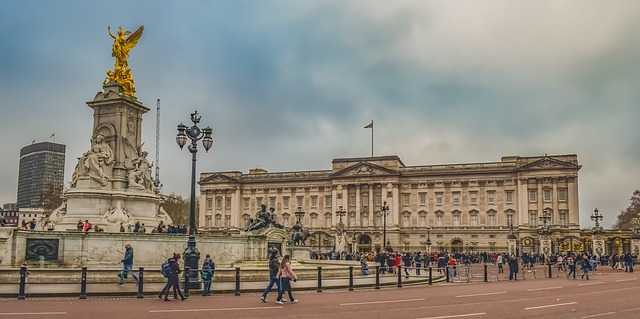For many years, architecture has shown its masterpieces all over the world. A beautiful building is like a freshly painted picture by a famous artist – unique and inspiring peace of art. Whenever we travel, besides exploring culture, people and food, exploring different architecture is a must.
When it comes to mesmerizing buildings, Britain definitely has a lot to offer. From historical mansions to modern buildings, constructed via various companies industrial design services using the latest technology. It only depends on your preferences, but there is no way that you wouldn’t find the kind of architecture you like in England. So let’s begin our architectural journey through Britain.
Buckingham Palace, London – the home of the royals
The world famous Buckingham Palace is an absolute symbol of the country. Importance of this place is pretty clear knowing the fact that this palace is the official residence and administrative headquarters for the reigning monarch of the United Kingdom, which is the Queen Elizabeth.
Buckingham Palace was built in 1703 as a townhouse. The place has been used as the official residence for hundreds of years. There have however been major reconstructions and revamping of the palace, especially notable structural additions in late 19th and early 20th centuries.
The palace has a whopping 775 rooms and its private garden is the largest in London. As London’s visitor you can’t skip taking photographs in front of Buckingham Palace and enjoying the nearby attractions and parks.
Palace of Westminster, London – houses of Parliament
The Palace of Westminster is recognised as the meeting point of the House of Commons and the House of Lords – making it the hub of British politics. The Palace is situated on the northern bank of the River Thames and is a hugely famous view across the world.
While the old palace was demolished due to fire in 1834, the current palace was rebuilt between 1840 and 1870 and uses an architectural style with perpendicular Gothic Revival themes. The whole palace is named ‘Westminster’ and has become the name of the UK Parliament.
An iconic London landmark and one of the most beautiful and most visited tourist attractions in the world known as “Big Ben” is actually the Elizabeth tower, and it’s part of this important building. Since 1970 the Palace of Westminster has been a Grade I listed building and is a part of the UNESCO World Heritage Site.
St George’s Hall, Liverpool – the heart of the city
Located on Lime Street in the centre of Liverpool, opposite Lime Street railway station, provides a magnificent welcome to Liverpool. This neoclassical style building opened in 1854 and is an outstanding expression of the confidence and ambition the Victorians had for their city.
St George’s Hall now plays host to concerts and law courts. It is a Grade I listed building and was in 1969 considered as the finest neo-Grecian building in the world by architectural historian Nikolaus Pevsner.
The Hall can rightly claim to be the emotional heart of the region, it has been the spontaneous gathering place for the people of Liverpool in times of celebration, vigils, and commemorations. Whoever comes to Liverpool will understand its significance when they see it with their own eyes.
Manchester Liverpool Road Railway Station, Manchester
Renowned as the world’s first passenger railway station, this modest building homed pioneering transport method that is known and used all across the globe. It was opened on 15 September 1830. A great deal of reassurance was required in the entire industry, which ran deep into the design of the building.
The trains were timetabled and consisted of hauling steam locomotives and is the longest standing, oldest surviving terminal railway station. The station closed to passenger services when the line was extended to join the Manchester and Leeds Railway at Hunt’s Bank. It is currently a part of the Museum of Science and Industry in Manchester.
Royal Pavilion, Brighton – a fragment of Asia in England

Looking like a piece of Asian landscape, Royal Pavilion is a perfect example of the merge between British and Indian culture. The Royal Pavilion is a Grade 1 listed building and was formerly the royal residence of King George IV, with a colourful history stretching back over 200 years.
It was first built in 1787 and was a seaside retreat for the king, and the famous domes were created by architects John Nash who started building in 1815. Queen Victoria, who was not a fan of the building nor Brighton, then sold the building to the town in 1850 for £53,000.
The Royal Pavilion in Brighton that was designed to fit in Asian architecture with features like domes that are typical for this culture, it has also served as a civic building, First World War hospital, and has become a true icon of Brighton.
This is just a peak into diversities and beauties of architecture that you will be able to see once you visit Britain, but it’s also a representation of various cultural and historical events that made the current landscape of England.
















Add Comment